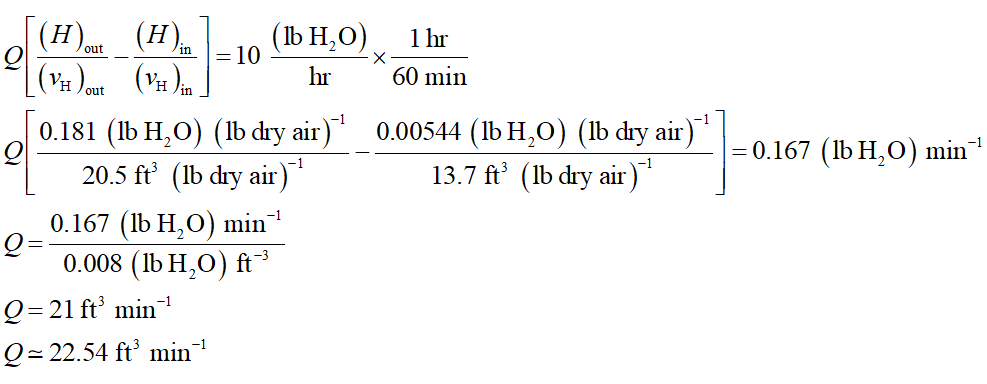Question:
How many cubic feet per minute of entering air is needed to evaporate 10 lb of water per hour from a rayon, if the air enters at 80 deg F and 25% humidity and leaves at 170 deg F and 55% humidity. The operating pressure is 14.3 psia.
A. 22.54
B. 12.68
C. 23.76
D. 16.28
Answer:
Step 1
The dry bulb temperature and relative humidity of the inlet air is 80 F and 25%, respectively. The specific volume and humidity ratio at the given parameters is calculated from psychrometric chart. The values are:

Step 2
The dry bulb temperature and relative humidity of the outlet air is 170 F and 55%, respectively. The specific volume and humidity ratio at the given parameters is calculated from psychrometric chart. The values are:

Step 3
The required flow rate is denoted by Q. Then:

Step 4
Hence, option (A) is correct.